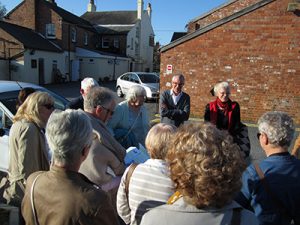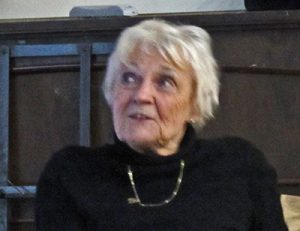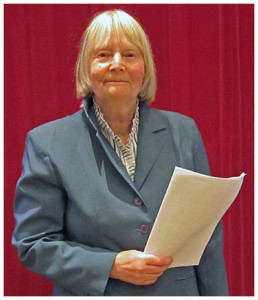 Anne Langley has researched into Alms Houses in Warwickshire and has a book about to be published on the subject. The following are some brief notes of the talk she gave to the Group in October 2015.
Anne Langley has researched into Alms Houses in Warwickshire and has a book about to be published on the subject. The following are some brief notes of the talk she gave to the Group in October 2015.
There is no universally recognised definition of what an “Alms House” is but Anne decided on the following definition for her research: they are created by an endowment, are purpose-built, and are for elderly people who are often given a pension as well as the accommodation. On this basis Anne has identified 34 Alms Houses in Warwickshire, the closest to Marton being the one at Leamington Hastings (pictured on the left of the image on the left).
Very early (Middle Ages) Alms Houses were often called “Hospitals”, although not all such institutions would have fitted the criteria of an Alms House as inhabitants may have been selected on the basis of ill health or poverty, rather than just age. (The Leamington Hastings Alms House appears to have been known as a “Hospital” at the time of the 1804 enclosure map for Marton. This shows fields owned by “Hospital” and “Allotment Leamington hospital”.)
Many Alms Houses were founded by “self-made” business men, who made their fortune in London and then returned to their home town and bequeathed the funds to set up an Alms House. There was great religious significance to this act, as it was believed that such generosity would help them reach paradise following their death. Some of these founders were childless and had so had no direct descendants to pass their wealth onto.
There were strict rules that occupants of Alms Houses had to comply with which might include attendance at church and general good conduct (no drunkenness). In some the rules were such that a widow would be evicted soon after the death of her husband. Special clothes, such as gowns, were frequently supplied to residents, perhaps to be worn on special occasions such as church.
Residents sometimes had family members living with them such as children or grandchildren. Given the pension they received the resident may well have been the main breadwinner of the family. Some residents had a carer living with them. Residents that could no longer look after themselves and had not made arrangements for someone else to look after them would have been moved out, perhaps to a workhouse, or to an asylum if they had mental problems.
More information about Alms Houses can be found by internet searches. For example, Anne has written a short article about Leamington Hastings Alms House for “Our Warwickshire” see this link.



 Marton’s latest pig cohort seem to be doing well, growing quickly and making the most of their field in the warmer days we’re starting to enjoy. The only glitches so far have been with the human side of the club, with former members accidently called on to feed the pigs from across the globe and youngest members learning about omnivores the hard way.
Marton’s latest pig cohort seem to be doing well, growing quickly and making the most of their field in the warmer days we’re starting to enjoy. The only glitches so far have been with the human side of the club, with former members accidently called on to feed the pigs from across the globe and youngest members learning about omnivores the hard way.






